
Swarm-based Technology
-

Between machines and humankind: A glimpse into technological developments
The third chapter of the Fall Term is about machines from the past, present, and the future. The Fall Term is part of the FOUNDING LAB, which is a collaborative prototype of a new university.
-

From Spaxels to the future of drone swarms
The pioneers of artistic artificial swarms look to the future: the Ars Electronica Futurelab’s new swarms+art website.
-

That’s why we are so fascinated by technology
We experiment, develop and tell stories with technology. The first part of Ars Electronica’s 2022 Year in Review shows how.
-
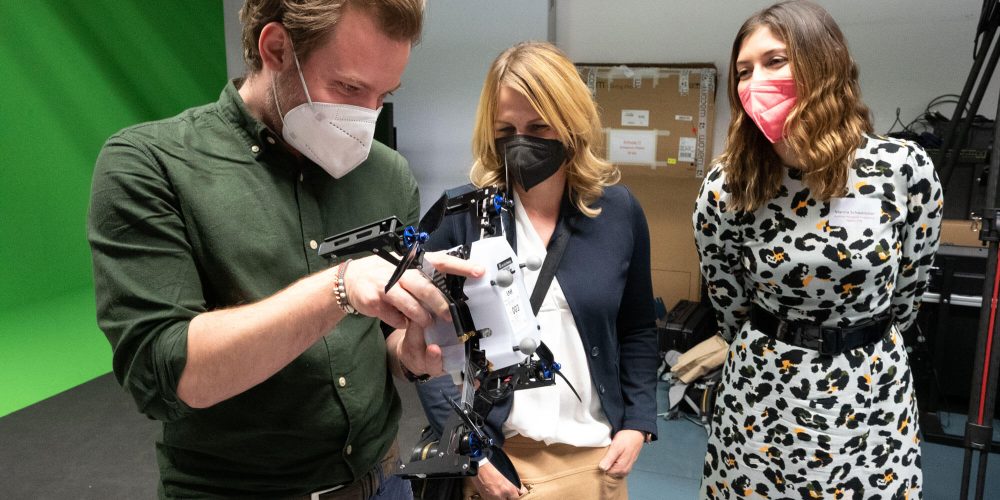
Swarm robotics up close
Drones merging to a digital canvas or painting with light: An Ars Electronica Futurelab workshop showcased the art of swarm robotics.
-
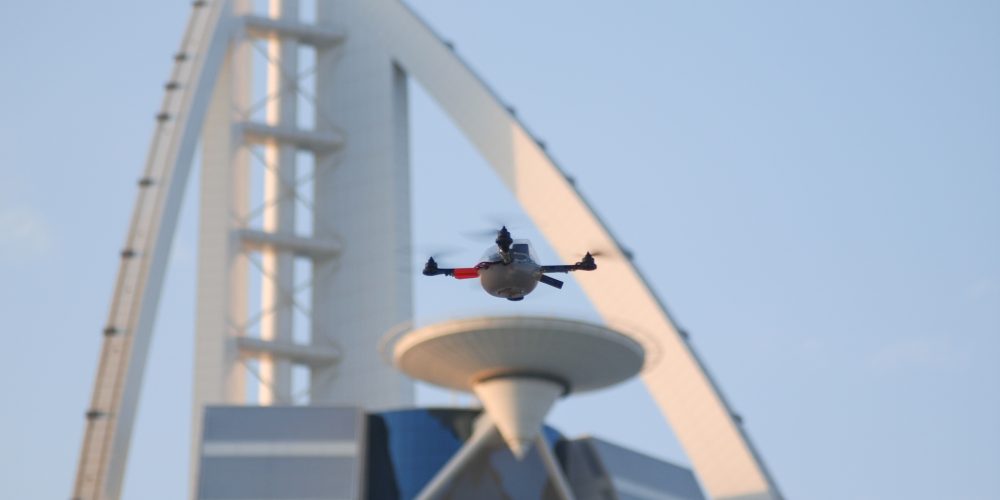
Throwback: Spaxels
Spaxels are autonomous drones that can be moved freely in space to form dynamic, three-dimensional figures in the night sky.
-

Art Thinking
There are difficult questions waiting for creative answers
-
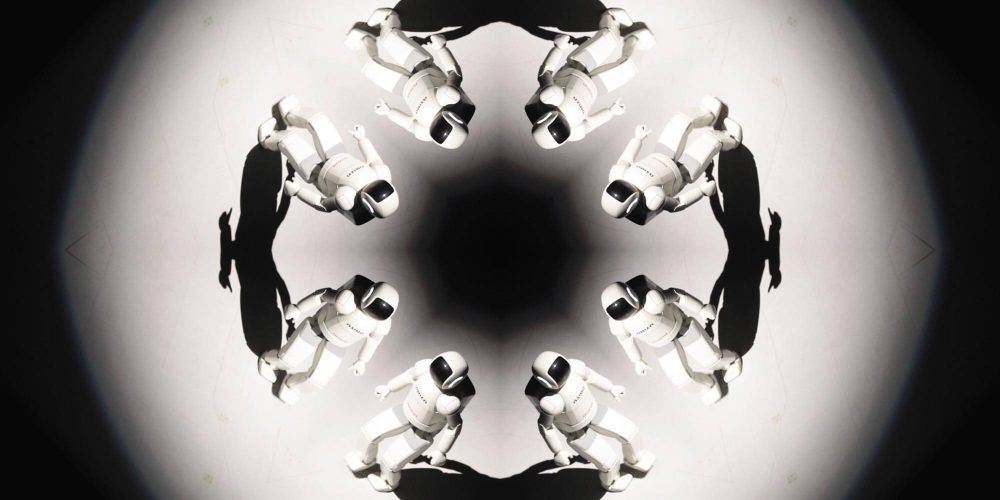
Humanity and Robotinity
A society that is changing along with its technology needs a new form of humanity
-

The Art of Swarms
The Spaxels were just the beginning of a long journey into the future of the Ars Electronica Futurelab
-
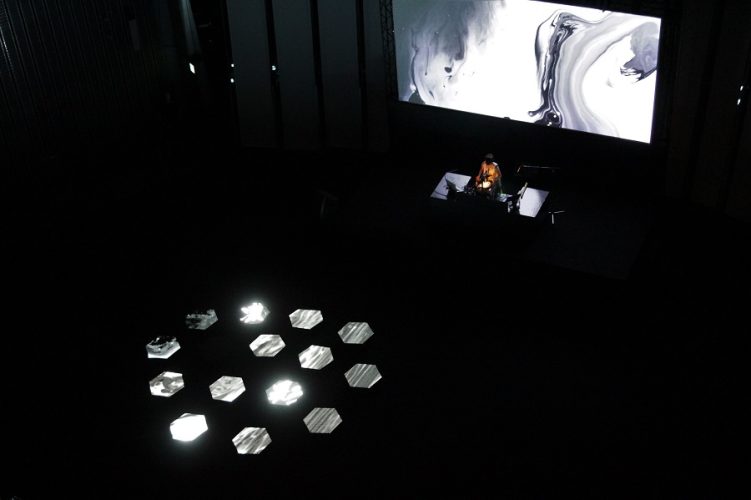
SwarmOS: Using swarm technology as a visual medium
Groundbots, swarm intelligence and technological swarms as a visual medium: At the “SwarmOS Research Demo” at the 2019 Ars Electronica Festival (Sept. 5 – 9), the Ars Electronica Futurelab is presenting insights into the in-house developed software SwarmOS – as well as hands-on application examples.
-
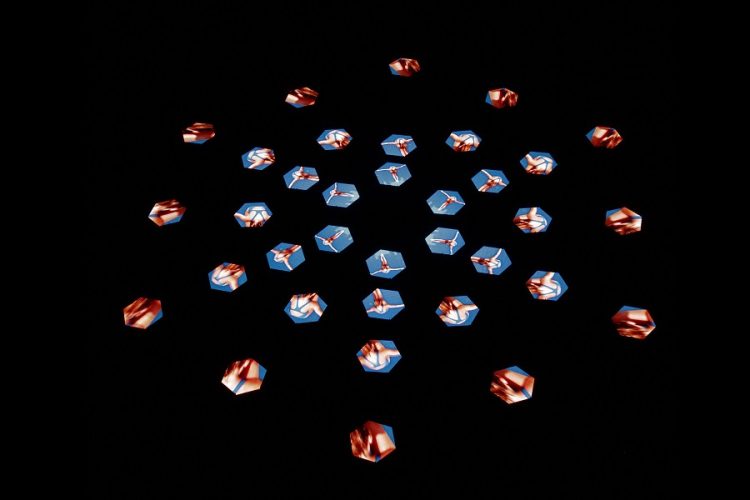
Swarm Intelligence and Art: The artistic vision behind Swarm Arena
A modern-day alchemist, electromagnetic Folklore instruments and display-carrying groundbots: The artistic vision behind the Swarm Arena performance at Miraikan, Tokyo, in July 2019 shaped a spectacle bordering on magic. Here, we hear from participating artists Akiko Nakayama and Ei Wada – and find out which elements of Swarm Arena to expect at this year’s Ars…
-
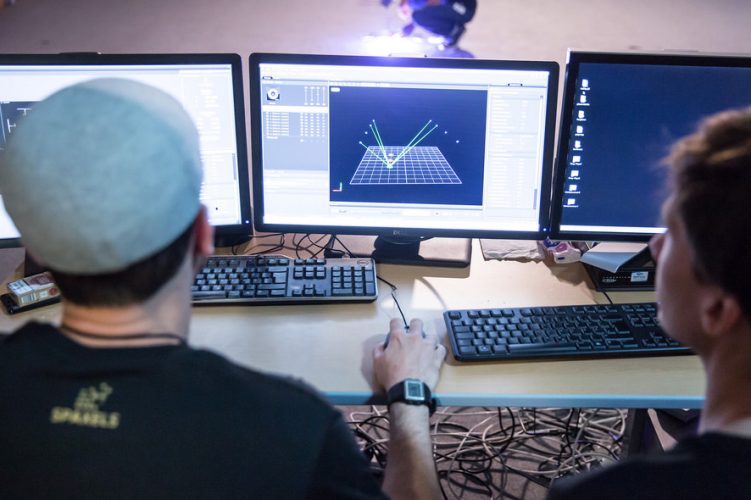
Swarm Control: The Future of Firefighting
Rosenbauer and Ars Electronica Futurelab take a look into the future of the fire brigade: Together with artists, scientists and designers of the laboratory, the fire-fighting equipment supplier is now conducting research into the swarm control of autonomous vehicles.
-
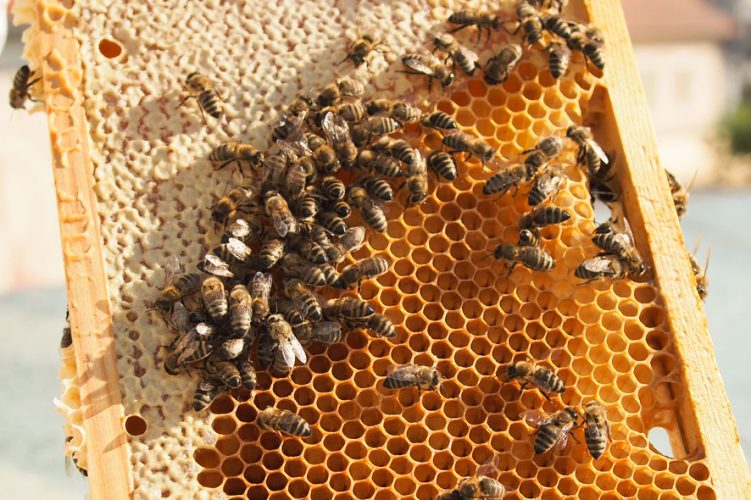
The Busy Bees at Ars Electronica
Anyone who’s walked all the way upstairs at the Ars Electronica Center lately is sure to have already discovered them—Ars Electronica’s busy bees. Now, a webcam delivers live images of the hives and their approximately 200,000 industrious inhabitants. We recently met with Harald Wohlschlager, the beekeeper in charge of this project, and learned some things…
-
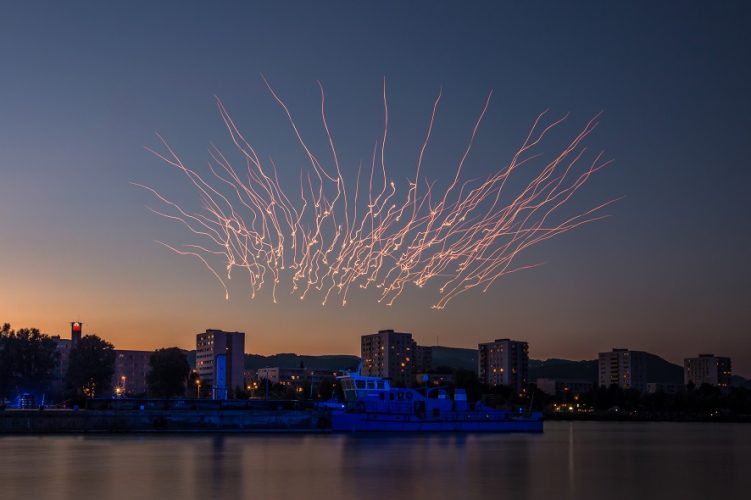
A Tinkerer, Two Designers and hundreds of Drones: How Swarm3D Came To Be
“And then, fortunately, the birds didn’t fall out of the sky,” said Michael Treml in a terse summary of the outcome of work over many months by an Ars Electronica Futurelab team at Rock in Rio 2017, the first public SPAXELS® drone show using Swarm3D software developed in-house in Linz. We were interested in finding…
-

Humanising Autonomy: A Language for Self-Driving Cars
How do we as pedestrians want to communicate with the autonomous autos that will soon be driving around our cities? Now is the best time to give some thought to this question, according to the staff of Humanising Autonomy, a project that was honored with a 2017 STARTS Prize and is now collaborating with, among…
-

Swarm Compass: A Sea Change in Visualizing Events by Swarm Intelligence
What are the possibilities of swarm intelligence? How can drones be used to make transportation and communications easier? The Ars Electronica Futurelab is working together with Japanese telecommunications company NTT to find answers. In this interview, Hideaki Ogawa of Ars Electronica Futurelab and Shingo Kinshita of NTT tell us about their efforts.
-
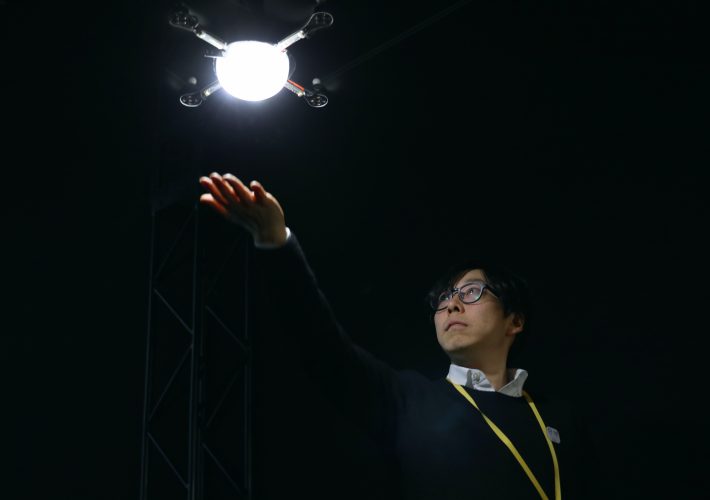
Spaxels Research Initiative – Swarms of the Future
How to deal with networks of intelligent, autonomous robots raises many questions that the Spaxels Research Initiative aims to formulate and pose.
-
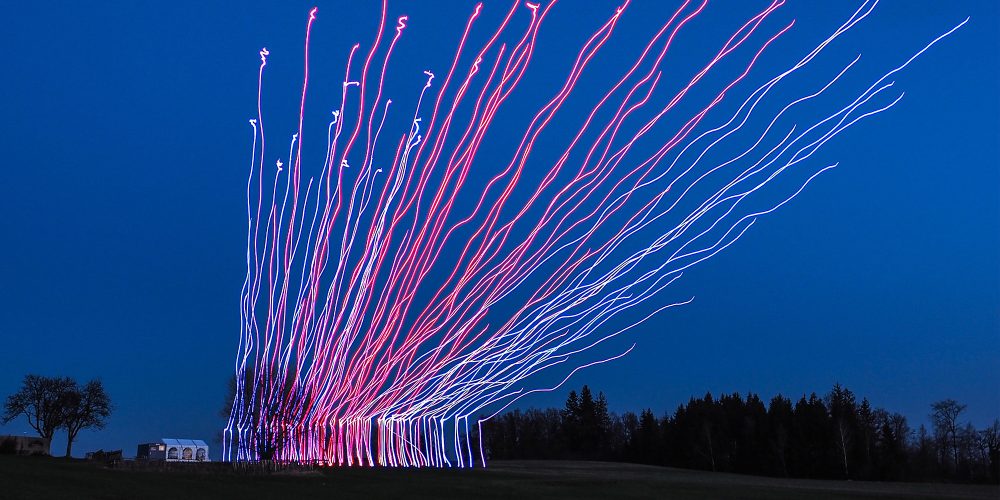
SPAXELS rock in Rio – A test run near Linz
This years edition of the mega rock festival ROCK IN RIO will be the first to wow its audience with an illuminated swarm of drones. But before the Ars Electronica Spaxels® can enchant a one-million-plus of people between September 15th and 24th, a three-day marathon rehearsal was staged in Upper Austria over the last Week…
-

Sky Compass: Going Beyond Navigation by the Stars
As Tokyo will be facing the challenge of hosting a huge influx of tourists in 2020, NTT, Japan’s biggest Telecommunication company, and Ars Electronica Futurelab are working on a sky compass to guide the people.
-

Social Communication Technologies towards 2020
For the Japanese enterprise NTT (Nippon Telegraph and Telephone) all signs are pointing towards 2020. The giant in telecommunication and Ars Electronica Futurelab as a forray collaboratively developed two pilot projects which were up to guide the visitors of the Ars Electronica Festival 2016 in a stunning fashion.
-

DRONE 100 – Spaxels Over Linz: Test Flight in the Mühlviertel
“DRONE 100 –Spaxels over Linz” is the title of a spectacular quadcopter swarm performance that Ars Electronica and Intel are staging on September 10th, 2016. Before the 100 drones make their European public debut above the Danube they’ll be subjected to a rigorous physical exam. The first two test flights already took place this week—the…
-

Around the World via Quadcopter
A spectacular Spaxels show will be the lead-in to the 2016 Klangwolke, Linz’s annual outdoor extravaganza. The DRONE 100 crew has already made a name for itself worldwide; now, the record-setting quadcopter formation of the Ars Electronica Futurelab and Intel™ Corporation is making its European debut. Here, Chris Bruckmayr and Andreas Jalsovec talk about some…
-
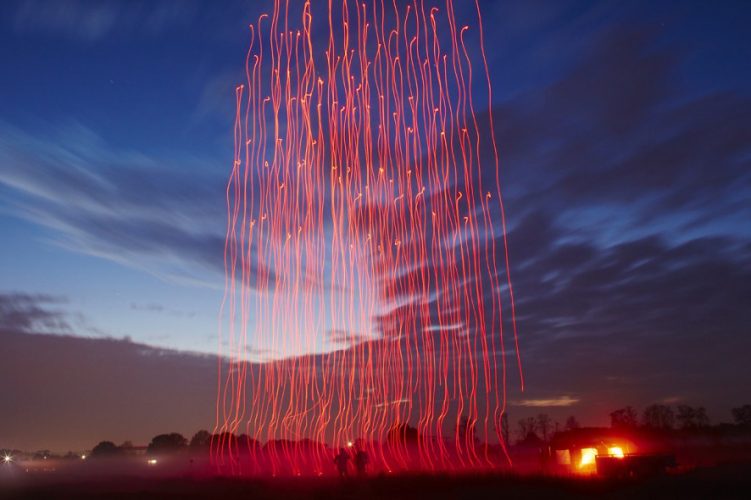
DRONE 100 in Linz: A Behind-the-Scenes Look
This will be the first public appearance in Europe of the world’s largest autonomous drone swarm. Just before the Visualisierte Klangwolke in September 2016, the Ars Electronica Futurelab’s 100 Spaxels will display their aerial artistry in Linz. Here, Chris Bruckmayr and Andreas Jalsovec of the Spaxels crew talk about all the preparations and work that…
-
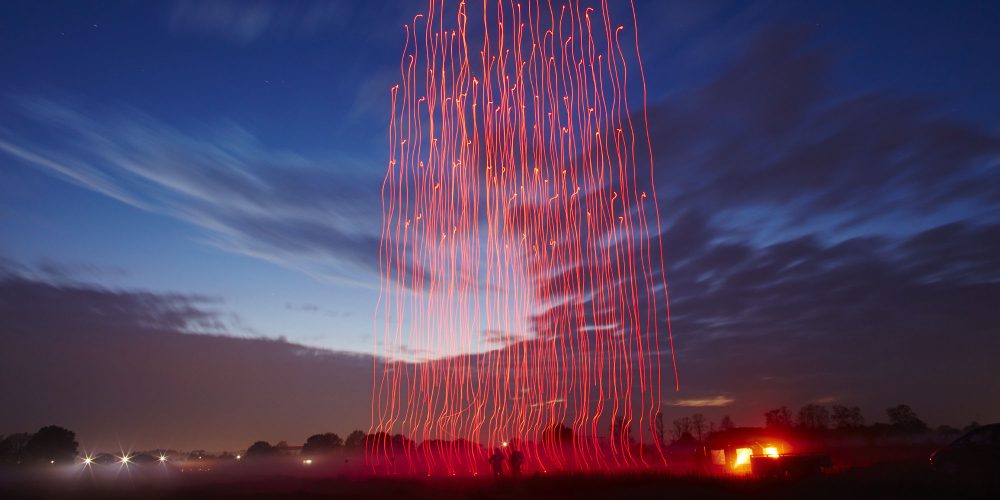
Drone 100: A World Record with 100 Points
A spectacle produced by the Ars Electronica Futurelab for Intel has made it into the record books! In a performance showcased by a promotional film for the world-famous chip maker, 100 spaxels took to the sky simultaneously. Team spirit is what it took to get this ambitious demonstration of technical brilliance off the ground.
-
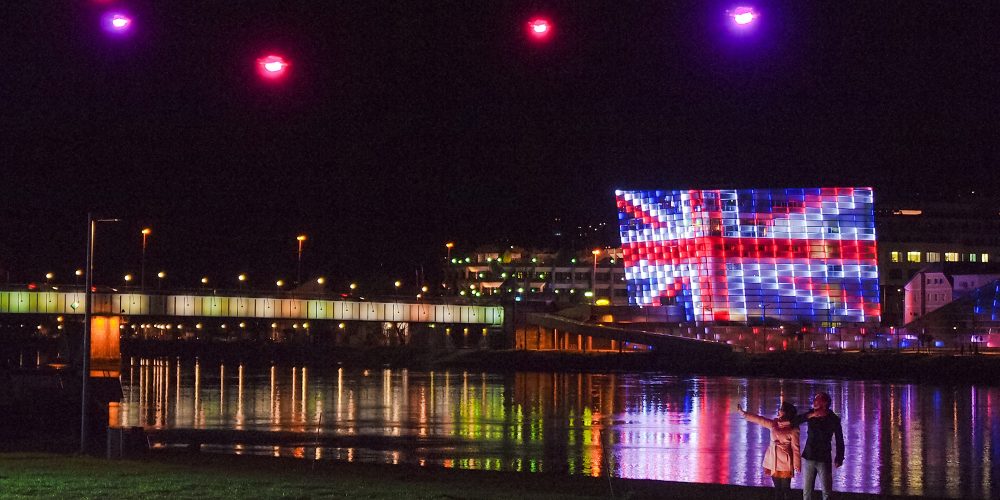
The Spaxels at the Eurovision Song Contest
This is the ultimate extravaganza! With over 195 million viewers, the 2015 Eurovision Song Contest will be one of the world’s biggest televised events. Among the featured attractions—albeit with only half a minute of air time—are the Spaxels of the Ars Electronica Futurelab in Linz.
-

Spaxels in Dubai
Accompany the Ars Electronica Futurelab crew on a business trip to Dubai. At a spectacular nighttime event staged to celebrate the United Arab Emirates’ 43rd National Day on December 1, 2014, the Spaxels, a swarm of LED-equipped quadcopters, got a very enthusiastic reception.
-

Smart Atoms
Flying Smart Atoms that are able to respond to touches by humans? The Ars Electronica Futurelab presented a significant development of the Spaxels during the 2014 Festival Ars Electronica.
-

A Behind-the-Scenes Look at the Spaxels
Ars Electronica Futurelab staffers have been doing R&D since 2012 on what they’ve dubbed Spaxels (space pixels). At the Spaxels Concept Demo members of the spaxels crew will go into detail about what makes the Spaxel-swarm work and illustrate what they’ve achieved to date.
-
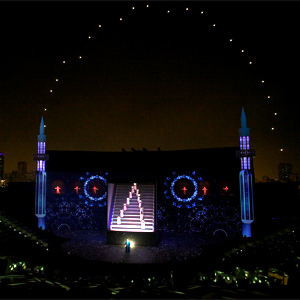
The Sky above Sharjah
The spaxels’ world tour continues. In “Clusters of Light,” an extravaganza just staged in the United Arab Emirates (UAE), the Ars Electronica Futurelab’s crew took their prodigious show design talents to the next level of excellence, and their choreographed formation of LED-equipped quadcopters thrilled audiences of thousands. Here, Chris Bruckmayr gives us a behind-the-scenes account.